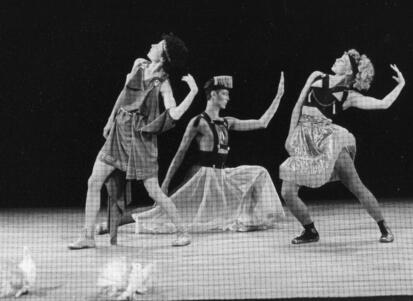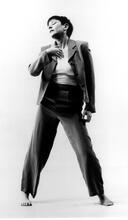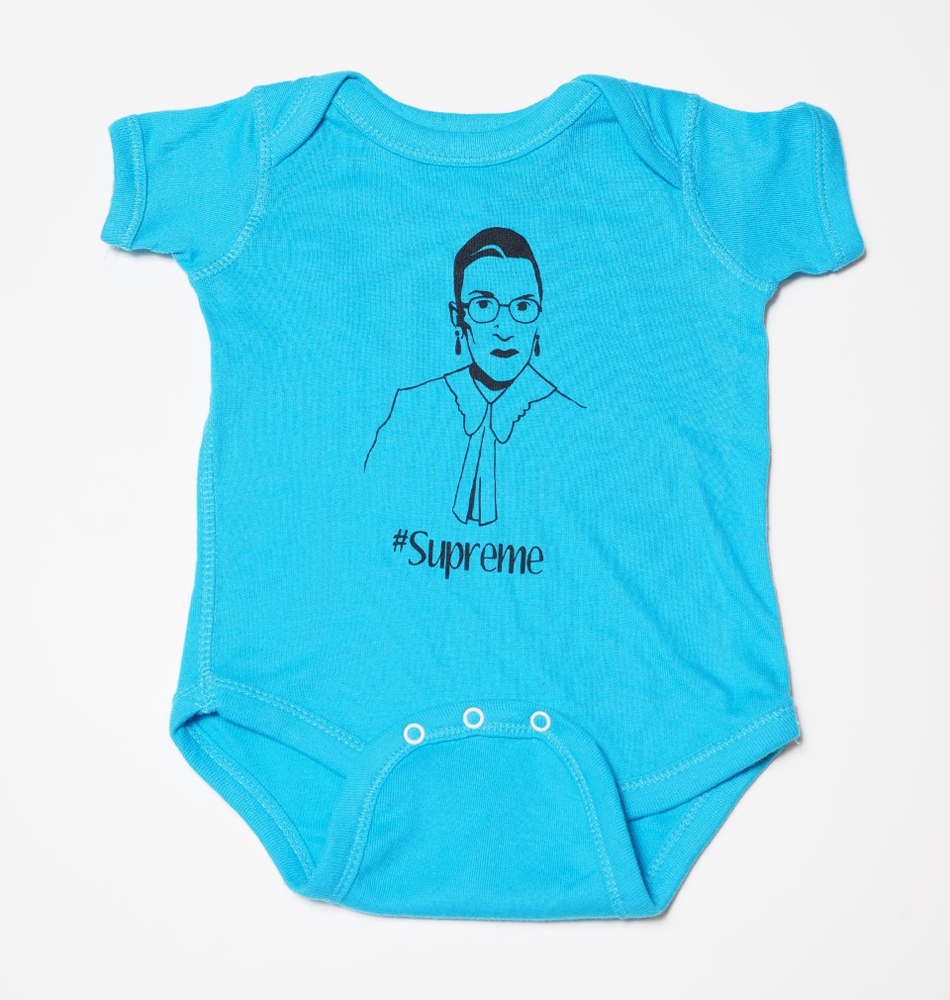Wendy Perron
Highly regarded as a writer and journalist, Wendy Perron has contributed countless articles on dance in various publications throughout her decades-long career. A dance addict from a young age, Perron’s performance and choreographic career bloomed alongside her writing. Perron is the dance field’s quintessential participant observer and her journalism is distinguished not only for its quality, but for its multifaceted perspective—reflecting her life spent not as an outside critic, but as someone deeply embedded in the field as a performer, choreographer, and educator. A self-proclaimed, “dance history nerd,” Perron’s relentless curiosity to unearth the forgotten histories of the dance field (an artistic genre plagued by lack of documentation) has endowed her as the field’s “Keeper of the Flame,” ensuring the eternal light—the Ner Tamid—is always burning.
A unique figure in the world of dance, Wendy Perron has devoted her life to the creation, performance, education, and history of dance. A dancer/choreographer turned writer/editor, she served as the editor in chief of Dance Magazine for almost ten years. Perron’s acclaimed book, The Grand Union: Accidental Anarchists of Downtown Dance 1970-76, published by Wesleyan University Press in 2020, fills a gap in the literature of postmodern dance. It underscores the power of collectivity, elevates the practice of improvisation, and deepens the understanding of the leaders of postmodern dance.
Family and Education
The granddaughter of Russian Jewish immigrants and one of five siblings, Perron was born in the Bronx, New York. The family moved to New Milford, New Jersey, when she was three years old. When her parents spoke Yiddish, she couldn’t understand them. She tried to learn the language from her grandfather, but those informal lessons did not last long.
Her mother, Dorothy Perron, who had danced with Jane Dudley and Sophie Maslow, started the New Milford School for Creative Dance in the family’s basement when Perron was five. Soon after, 200 girls a week were reveling in “Isadora skips,” rhythm games, and mirror improvisations. It seems that Perron didn’t choose dance, but rather dance chose her.
When she was eight, her family moved to Ridgewood, New Jersey, where, for the next ten years, Wendy studied ballet with Irine Fokine. In addition, she spent the summers of 1960 and 1963 at the School of American Ballet. From age fifteen to seventeen, she added classes at the Martha Graham School of Contemporary Dance, as well at American Dance Center, the school of Robert Joffrey.
When it came time for college, Perron was torn between The Juilliard School and Bennington College. She chose Bennington, a place that offered the discovery of uncharted territory—both physical and intellectual. At Bennington, Perron became interested in choreographing. And she befriended freshman and dance-icon-to-be, Liz Lerman. More than fifty years later, Lerman described Perron as “deeply curious and wildly expansive in thought.” “Wendy is challenging—both verbally and intellectually,” reflected Lerman. “We argue and we fight, but we keep talking—mostly about the same things. We are sustained by this deep affection for dance, and for each other” (Liz Lerman, interview with the author).
Beginning a Dance Career
With a strong stage presence, Perron established herself as a postmodern dancer shortly after moving to New York. Between 1969 and 1974, she danced with over twenty downtown choreographers, including Rudy Perez, Kathryn Posin, Jeff Duncan, and others in the constellation of Dance Theater Workshop, a storied performance venue and incubator for experimental dance, while also showing her own choreography.
Sparked by a course in dance criticism sponsored by Dance Theater Workshop and taught by noted dance critics Deborah Jowitt and Marcia B. Siegel, Perron also began a writing career that has lasted more than four decades. In addition to Dance Magazine, she has written for The New York Times, the Village Voice, vanityfair.com, and Contact Quarterly, as well as for publications in England, Germany, and China.
When Perron first saw the Trisha Brown Dance Company at the Whitney Museum in 1971, she was “triple blown away.” Perron joined the group in 1975 and collaborated in the creation of Pyramid (1976), Line Up (1976-77), and Splang (1978). Concurrently, Perron wrote performance reviews and edited the “Concepts in Performance” page for the SoHo Weekly News. These writings are archived in the Fales Special Collection at Bobst Library at New York University as the Wendy Perron Papers.
In 1976, Perron’s deeply troubled brother Tom committed suicide. Perron recalled Tom’s behavior to be similar to Catcher in the Rye’s Holden Caulfield’s, and she felt a deep affinity for Salinger and his tortured characters. She wrote to the author a few years after the suicide and he answered right away. Thus began a correspondence that turned into a brief period of friendship.
In 1978, Perron joined the faculty of her alma mater. While teaching there, she co-founded and developed the Bennington College Judson Project (BCJP), a multi-year series of residencies, exhibits, and interviews. The BCJP contributed to subsequent research on Judson Dance Theater by dance historian Sally Banes and curators at the Museum of Modern Art.
In 1984, Perron’s romantic partner at the time, sculptor Donald Judd, encouraged her to leave teaching to fully pursue choreography. She has choreographed over forty works for her company; she received one of the first three-year grants from the National Endowment for the Arts and was inducted into the New York Foundation for the Arts’ Hall of Fame. Her company has performed at Danspace Project, the Joyce Theater, and Lincoln Center Festival, among many other New York City venues, as well as around the country. Village Voice dance critic Deborah Jowitt wrote of her work: “She construes dancing differently from almost anyone else. Nothing she does, or asks her colleagues to do, is graceful in any conventional dancerly sense of the word, but there is an amazing poignant human grace in her movements” (Village Voice, May 24, 1983). Colleagues continue to vividly recount her piece, Arena, which premiered at Jacob’s Pillow Dance Festival in 1987. Separated from the audience by a thin netting, 22 live pigeons flew across the proscenium.
Also in 1987, Perron married Jim Siegel, a writer and former finance and development director of the Joffrey Ballet; she gave birth to a son, Nicholas, in 1988. A veritable dance historian by osmosis, Siegel speaks fondly of the couple’s constant discussions about dance.
In the early 1990s, Perron served as the Associate Director of Jacob’s Pillow while continuing to dance, choreograph, teach, and write. In 1995, Jim suffered a spinal cord injury and was initially paralyzed from the neck down. Needing to support the family, Perron took a part-time job with Physicians for Social Responsibility, a peace organization in which she had been active for years. Her work at PSR was an ode to her mother’s years of peace-building and organizing, and to the embedded Jewish value of tikkun olam, repairing the world.
Editing Dance Magazine
In 2000, Perron was approached regarding the new position of New York Editor for Dance Magazine, which had just relocated to California. She accepted the position and became Editor in Chief four years later when the publication returned to New York City. “After they chose me to be Editor in Chief,” she said, “I didn’t sleep that whole night. And I thought—I’ll never sleep again. I have so many ideas and so many things to take care of.” Perron found that editing was akin to leading a dance composition class: “When a story came in that surprised me with its craft and depth, I felt I had received a great gift” (Perron, 129).
Through her new role, Perron directly influenced the fields of dance criticism and journalism. She insisted on including the voices of dance artists themselves in interviews, features, and columns among the pages of Dance Magazine. She also introduced frank discussions about AIDS and about race and racism in dance.
To the amusement of the staff, she would often do Pilates exercises on the office floor, keeping her dancer soul and body strong. Siobhan Burke, an editor at Dance Magazine from 2008 to 2013, remembers Perron as a distinctive leader: “I remember her saying to me, ‘I allow myself a bit of eccentricity.’ And I liked that. It taught me something about accepting myself, and going through life with that perspective.”
By the end of her thirteen-and-a-half-year tenure at Dance Magazine, Perron had contributed more than 1,000 pieces, ranging from reviews and previews to performance roundups, interviews (written and videotaped), features, and blog postings. Perron’s first book, Through the Eyes of a Dancer (Wesleyan University Press, 2013), is a selection of her writings about dance, spanning four decades and various publications.
Jewish Identity and Later Career
Identifying as a secular Jew, Perron co-curated a concert with Lerman at the “Jews and Jewishness in the Dance World” conference at Arizona State University in October 2018. “I wish I could’ve shared that experience with my mother, because my Jewishness and my dancing came through her,” she said. “The next best thing was that I shared it with Liz—and many other old friends.”
Today, Perron and her husband live in New York City. Perpetually in motion and thought, she has lectured across the country, moderated many public conversations on dance (in person and on the Internet), been a frequent juror and panelist, and curated exhibits on the intersection of dance and visual art. She teaches dance history at Juilliard and a graduate seminar at New York University’s Tisch School of the Arts. Recognizing the value of multiplicity seems to be the fabric from which her identity continues to be sewn.
Lerman sums up the secret to Perron’s longevity in the field: “Wendy’s willingness and insistence on writing, teaching, dancing, and choreographing is notable. We were part of a generation that was pressured to choose just one. But we refused to choose…I’m not sure that people understand how much her dancing and choreographing inform her writing. It’s so evident. What she’s seeing is not being seen by just a regular person, but by someone who has moved and made.”
Former Bennington classmate and dance editor at the Village Voice Elizabeth Zimmer echoes this sentiment: “Wendy is the dance field’s quintessential participant observer.” Yet, throughout her multifaceted career, Perron has never forgotten the impetus for it all: “Nothing I have done is more difficult than choreography. Existentially, and intestinally, it is quite a different project than writing criticism. The charge of art is to create something from nothing. Critics can be edifying, educational, and even inspiring, but they have not dedicated their lives to the mind-boggling task of making art” (Village Voice, April 9, 1991).
Selected Writings by Wendy Perron
“All in the Family.” Dance Magazine, November 25, 2013.
https://www.dancemagazine.com/all_in_the_family-2306921615.html
“Dorothy Perron – for Jewish Women’s Archive.” Unpublished.
“Shoot for the Moon, but Don’t Aim Too Hard.” Vanity Fair, April 14, 2010.
https://www.vanityfair.com/culture/2010/04/salinger-201004
Through the Eyes of a Dancer: Selected Writings. Middletown: Wesleyan University Press, 2013.
Burke, Siobhan. Interview with the author, February 14, 2020.
Dunning, Jennifer. “The Dance: Perron and Chuma at Jacob’s Pillow.” New York Times, July 13, 1987. https://www.nytimes.com/1987/07/13/arts/the-dance-perron-and-chuma-at-j…
Gladstone, Valerie. “An Improvisatory Troupe Trips off the Subway.” New York Times, July 13, 1997. https://www.nytimes.com/1997/07/13/arts/an-improvisatory-troupe-trips-o…
Jowitt, Deborah. “Dance Voice.” The Village Voice, May 24, 1983.
Lerman, Liz. Interview with the author, February 16, 2020.
The Moving Architects, host. “Wendy Perron.” Movers & Shapers: A Dance Podcast (podcast). December 19, 2017. Accessed January 26, 2020
Perron, Pamela. Interview with the author, February 16, 2020.
Siegel, Jim. Interview with the author, March 22, 2020.
Solomons, Jr, Gus. Interview with the author, February 9, 2020.
Tollon, Marie. “A Conversation with Dance Addict Wendy Perron.” May 6, 2014. https://odcsf.wordpress.com/2014/05/06/a-conversation-with-dance-addict…
Zimmer, Elizabeth. Interview with the author, March 14, 2020.
Written by Loren Sass, with guidance from Hope Blecher, Siobhan Burke, Liz Lerman, Pamela Perron, Wendy Perron, Jim Siegel, Gus Solomons, Jr., and Elizabeth Zimmer.















